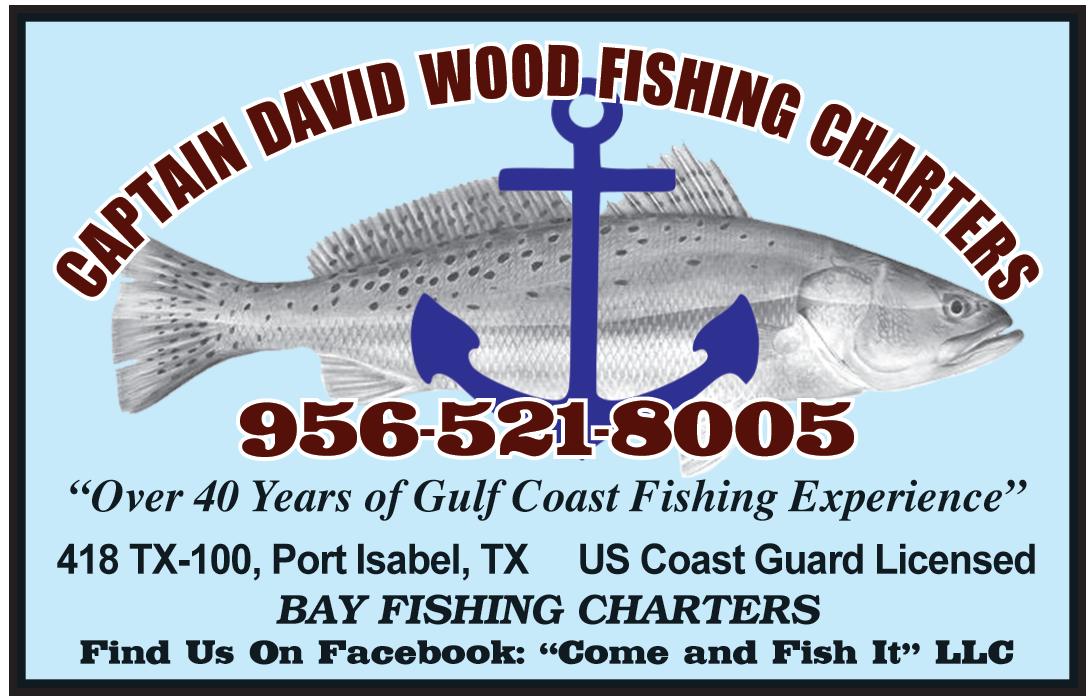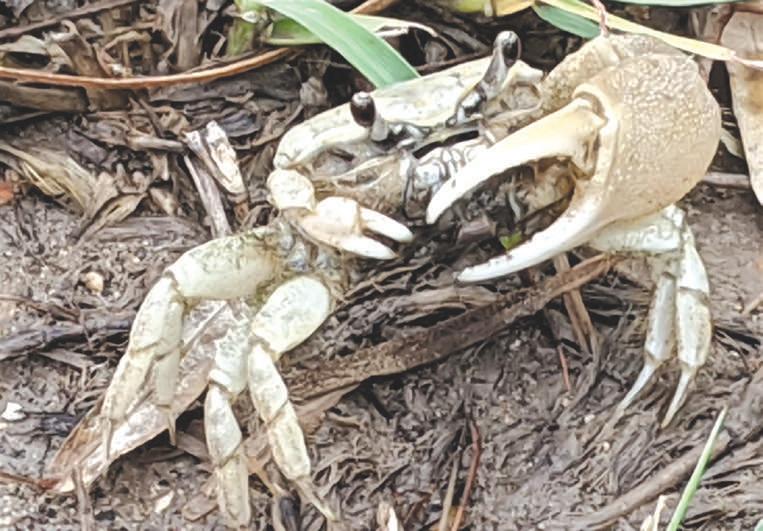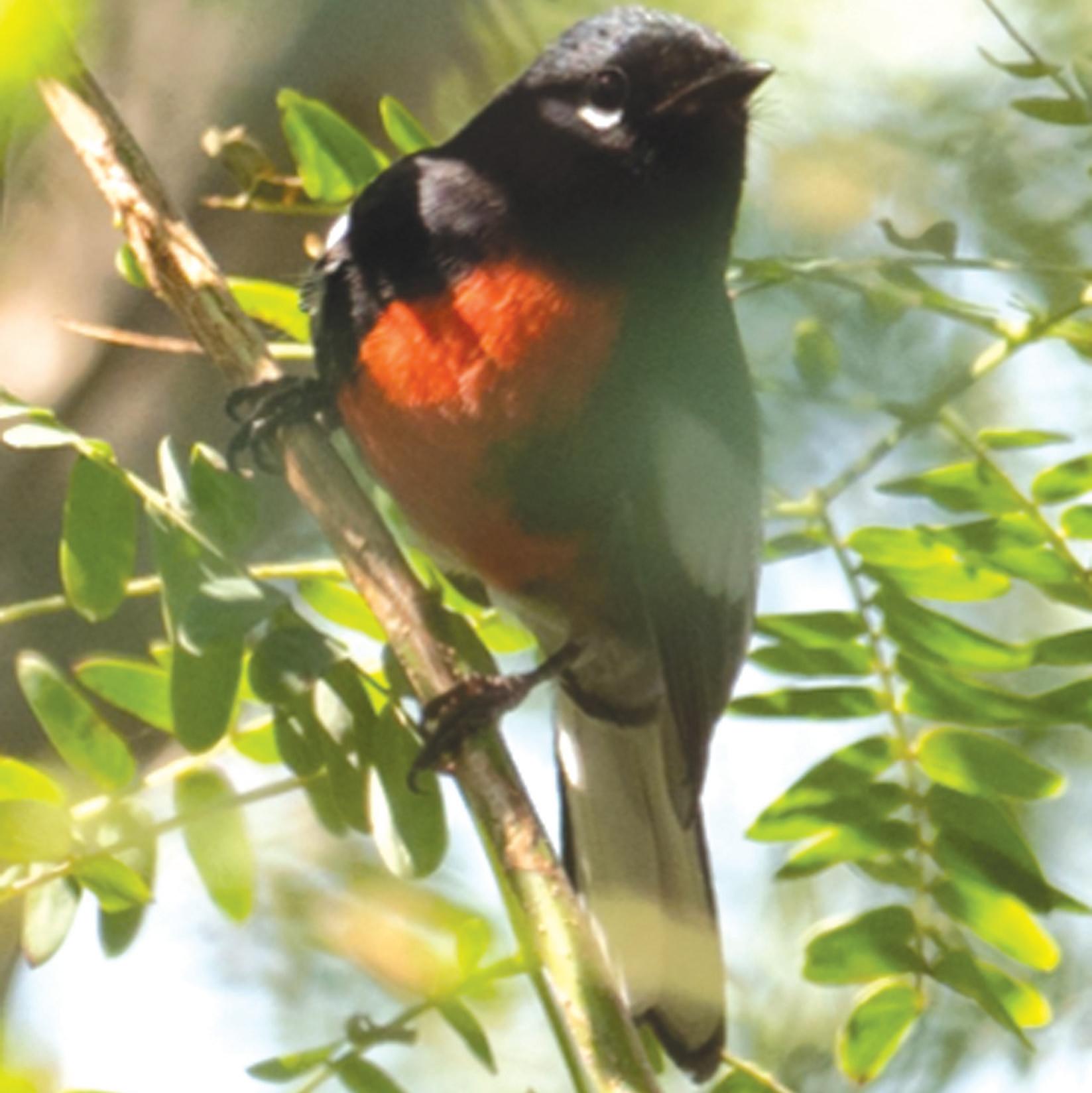
1 minute read
Creatures Among Us
2020 SOUTH PADRE PARADE 7 Laguna Fiddler Crabs
Our local inland crustaceans
Photo & Words by M. KATHY RAINES Creatures Among Us
This July, I gingerly threaded my bicycle through ranks of skittering crabs—each male lugging a massive claw— on the Brownsville Historic Battlefield Trail after a soaking from Hurricane Hanna.
Colonies of Laguna fiddler crabs (Uca (Laptuca) sybcylindrical), with adjacent pebbly palaces, can live miles inland, far from all but ephemeral puddles. Only this robust fiddler—one of our county’s six species— thrives in a semi-arid habitat. It digs deep into salty groundwater, its mottled gray carapace camouflaged against dirt and gravel. Fiddler crabs flourish in the highly saline Laguna Madre, ranging roughly from Galveston to Tampico.
Fiddler crabs are small; their carapaces, or shells, are rarely over two inches in diameter. Only the male fiddler bears an oversized cheliped, or claw-bearing, limb, which it waves to attract mates and defend turf. Unlike most

invertebrates, fiddler crabs are territorial, brandishing their claws at would-be usurpers, but rarely fighting. Nevertheless, this claw can pierce a rival. A male may lose his claw, which soon regenerates on its opposite side.
The name “fiddler crab” apparently derives from the male’s claw-waving which resembles a violinist. Many Spanish-speakers call it “Cangrejo” (crab) violinista,” but Peruvians, its movement evoking a needle worker, call it “maestro sastre” or “master tailor.” Both Brazilians and Japanese, imagining the crab’s signaling to the sea, call it, respectively, “Chama mares”—literally “call seas,” and “Siho maneki” for “beckoning for the return of the tide.”
Birds and other creatures relish these delectable morsels. With its long bill, a curlew scoops the crab out of its nearly six-foot burrow.
This crab dines on decayed matter—nematodes (unsegmented worms), fungi, algae

and bacteria. While the female eats with two claws, the male—his huge claw ill-adapted to this task—utilizes one.
The crab delivers a tiny clump of sand to a front set of scissoring, hair-fringed blades, one of which flicks edible morsels into the mouth, while another holds onto the rest.
A thriving population of fiddler crabs indicates a healthy ecosystem, as they are sensitive to pesticides and heavy metals.





